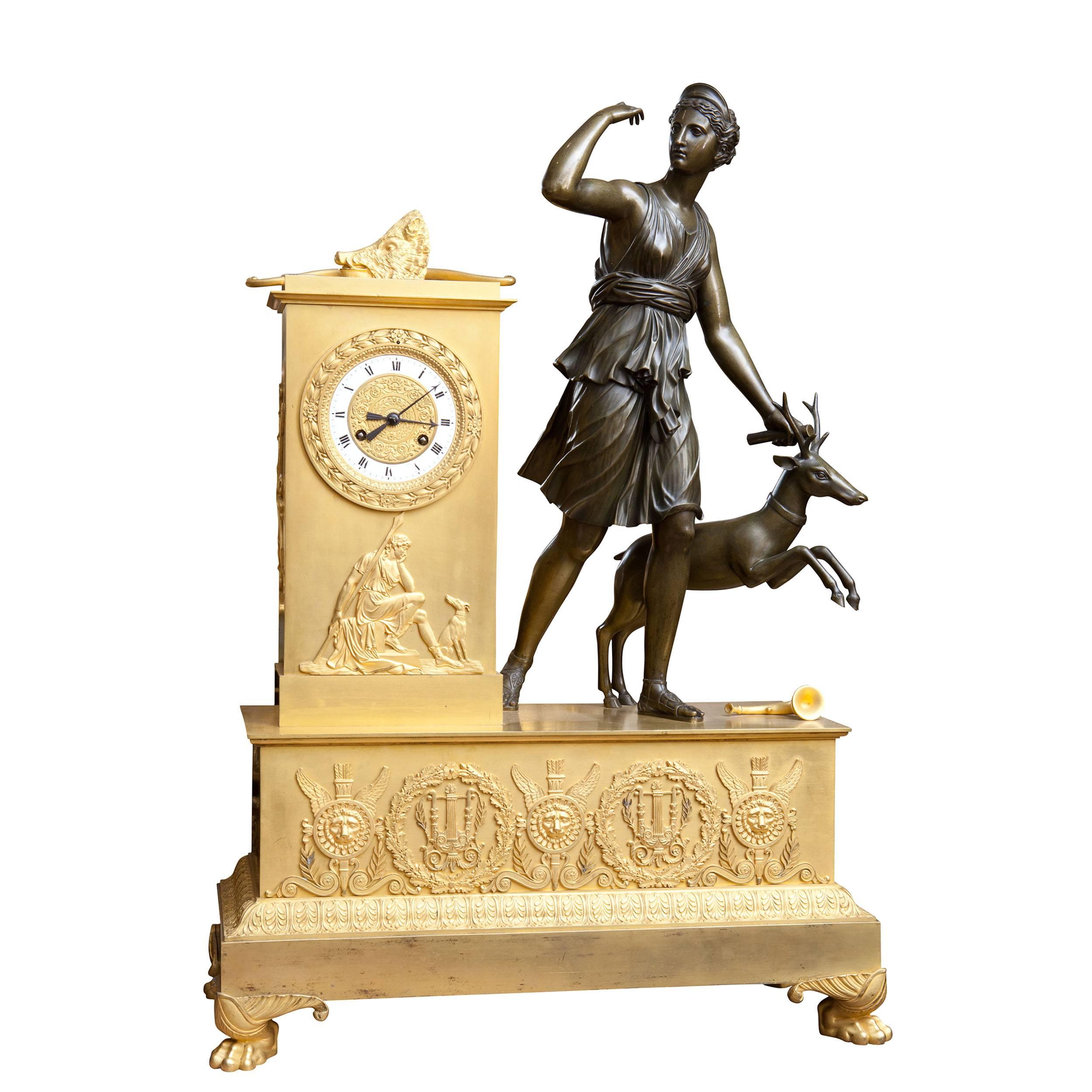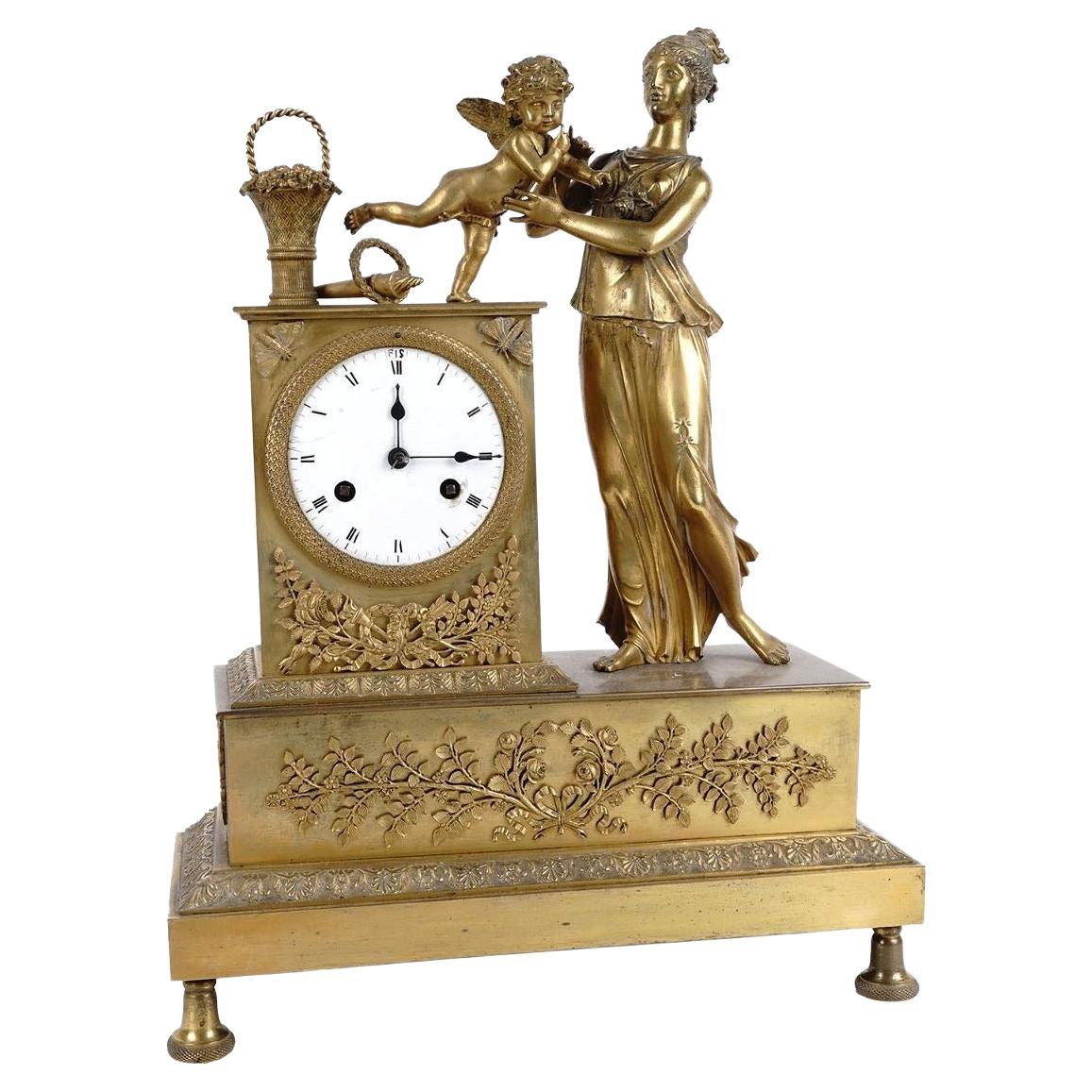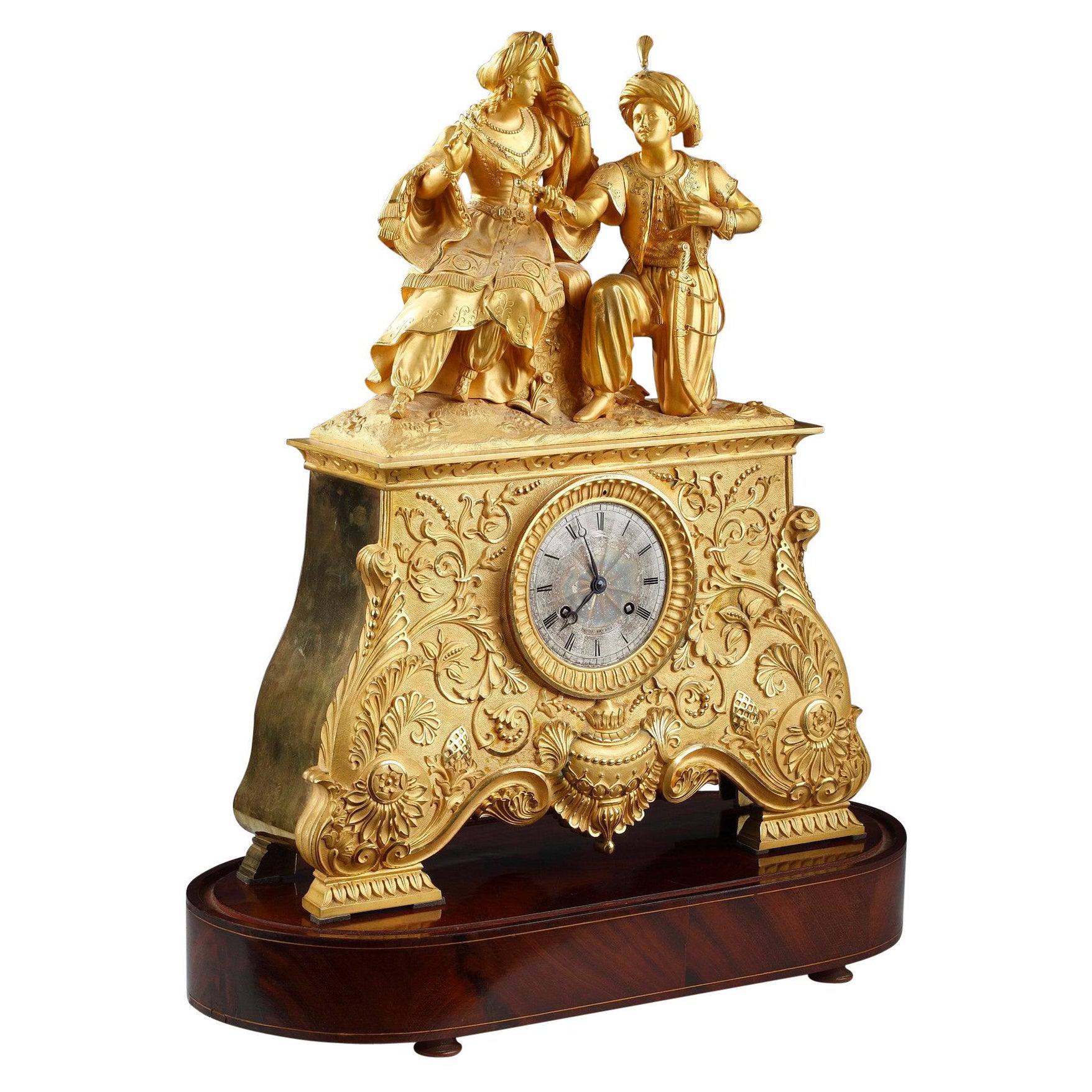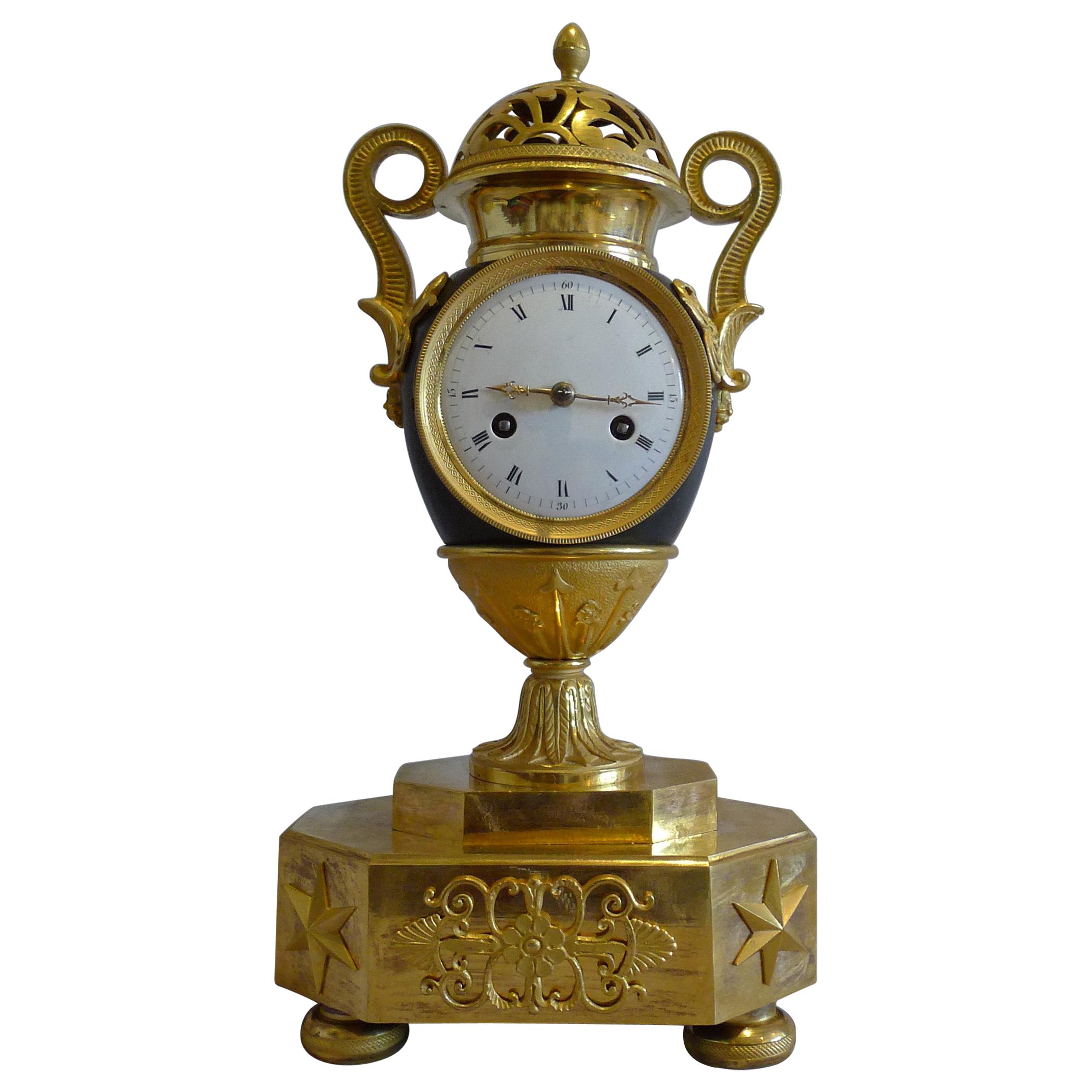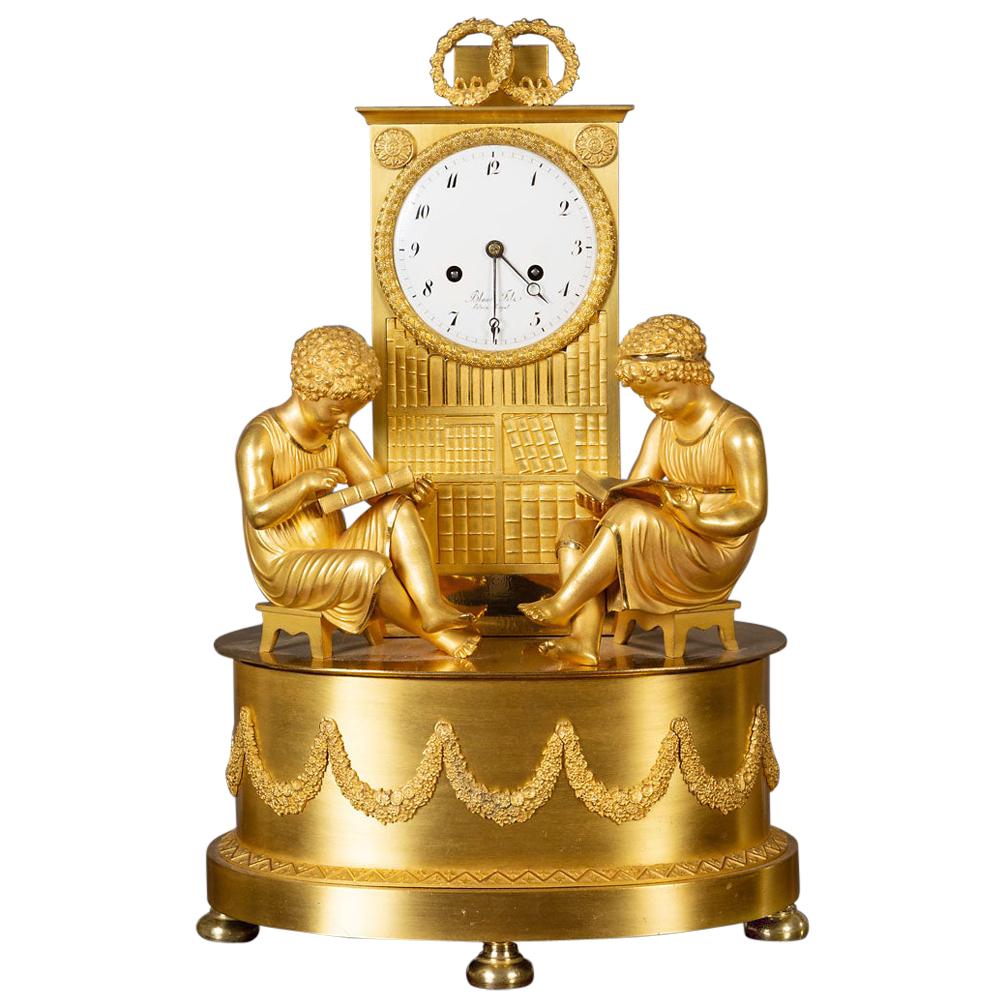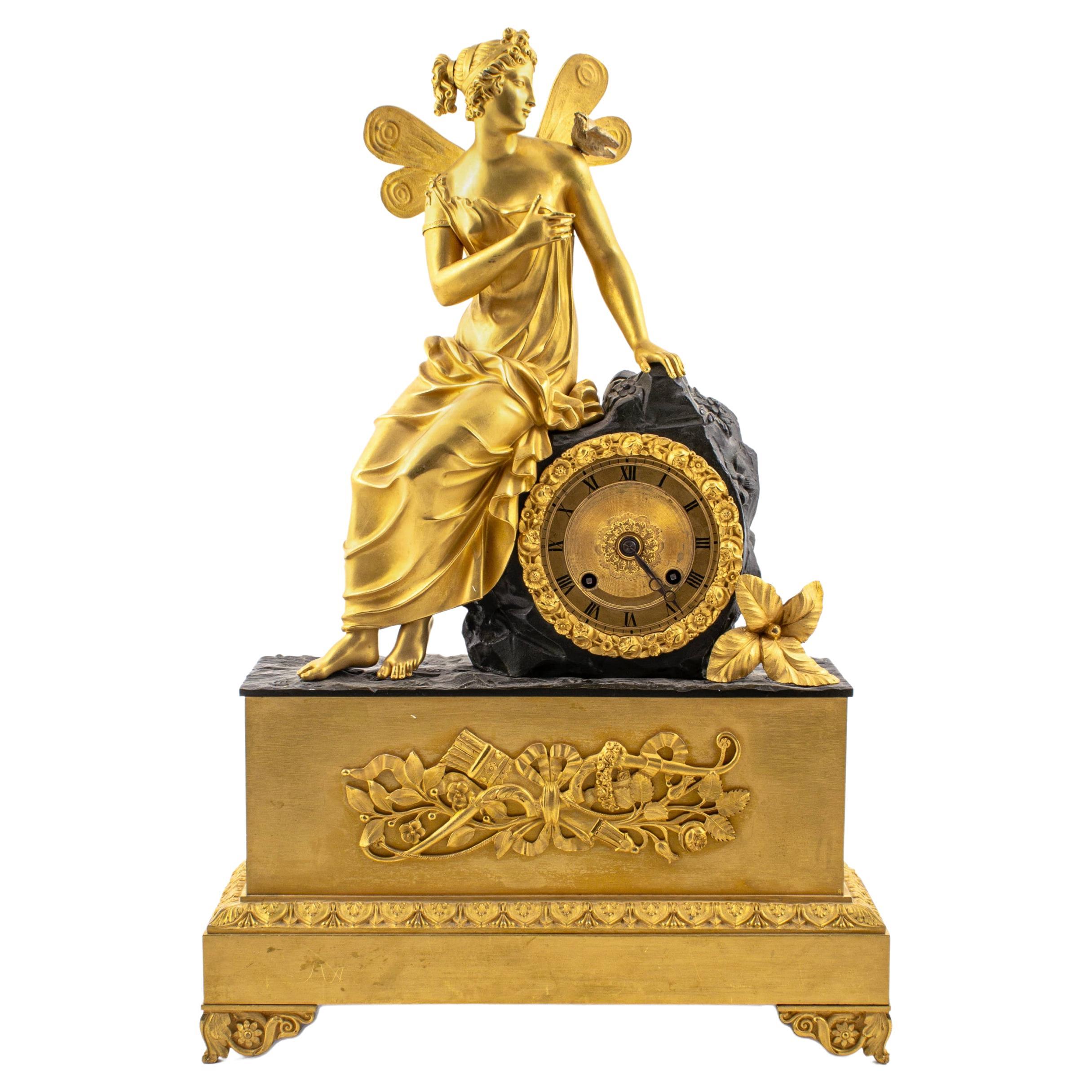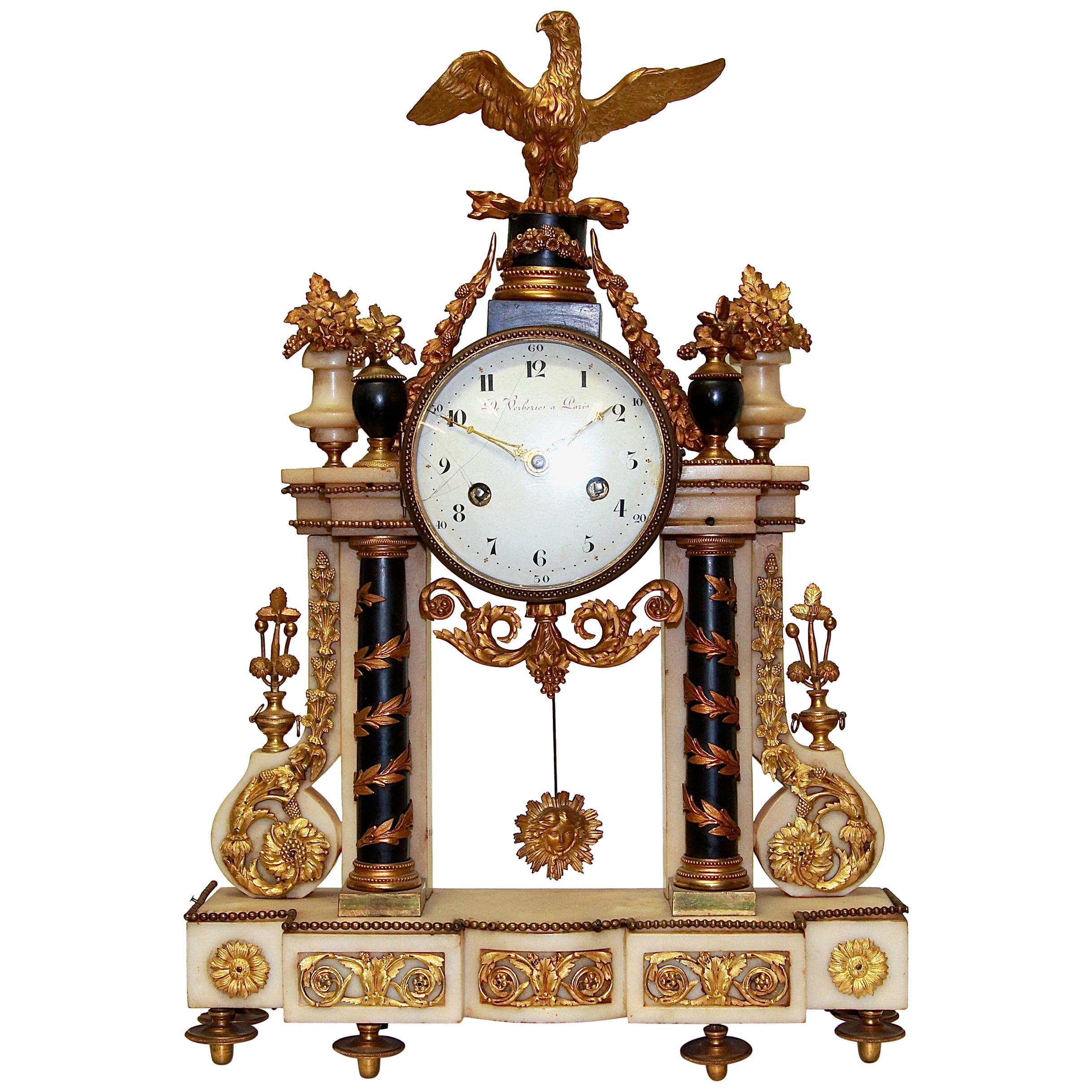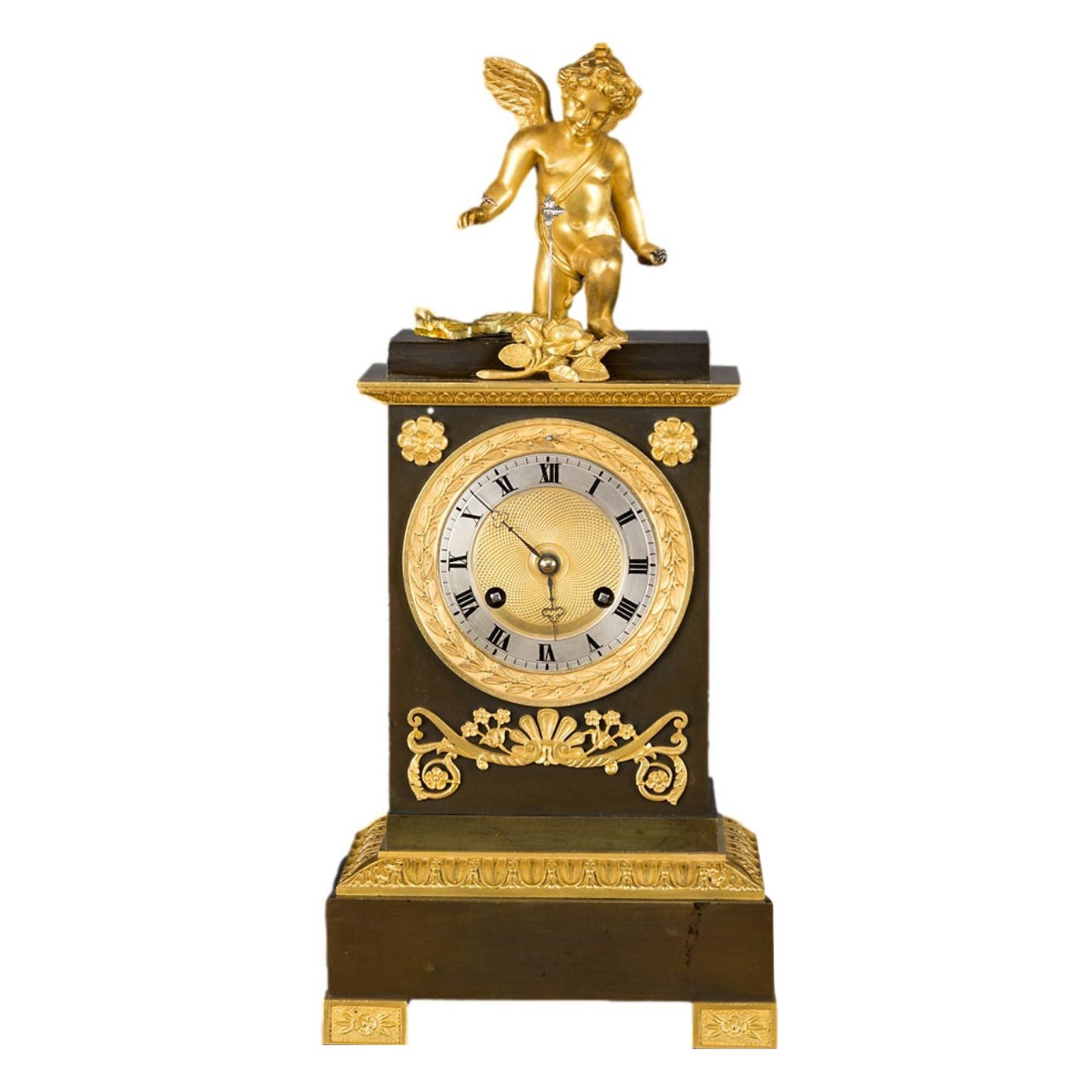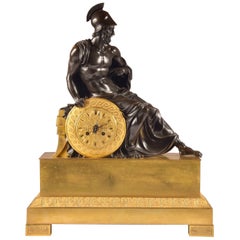
Large French Empire Clock Ormolu with Roman Soldier, Gilded Bronze, circa 1830
View Similar Items
1 of 16
Large French Empire Clock Ormolu with Roman Soldier, Gilded Bronze, circa 1830
About the Item
- Dimensions:Height: 23.63 in (60 cm)Width: 19.69 in (50 cm)Depth: 7.09 in (18 cm)
- Style:Louis Philippe (Of the Period)
- Materials and Techniques:
- Place of Origin:
- Period:
- Date of Manufacture:1830
- Condition:
- Seller Location:Ulestraten, NL
- Reference Number:1stDibs: LU5020116377362
You May Also Like
- Large Empire Bronze and Ormolu Mantel ClockLocated in London, by appointment onlyFrance, circa 1820-1830. A large-scale early 19th century bronze and gilt bronze mantel clock, the clocks hunting theme, featuring three different scenes. The bronze Diana...Category
Antique 1820s French Louis Philippe Mantel Clocks
MaterialsBronze, Ormolu
- Empire Mahogany Clock with Gilded OrmoluLocated in Los Angeles, CAEmpire mahogany clock with gilded ormolu clock is in working condition.Category
Antique Late 19th Century French Table Clocks and Desk Clocks
MaterialsMahogany
- Miniature French Empire Ormolu Mantel Clock of SoldierLocated in London, GBFine miniature French Empire clock in ormolu. Dating from the First French Empire period with original ormolu and with fine enamel dial and movement signed The clock stands upon fine and delicate toupee feet. The the base is an applied ormolu mount of crossed standards tied with ribbon and with laurel branches. To the left of the dial stands a soldier in greatcoat and bearskin chapeau with moustache epaulets and his arm in a sling and a decoration on his breast. He has his left hand raised and resting on a forget-me-not flower and laurel wreath in front of two crossed battle axes. The white enamel convex dial...Category
Antique 1810s French Table Clocks and Desk Clocks
MaterialsOrmolu
- French Empire Ormolu Bronze Mantel ClockLocated in New York, NYAntique (early 19th century) French ormolu bronze mantel clock in the Empire style depicting neoclassical maiden with child.Category
Antique 19th Century French Empire Mantel Clocks
MaterialsBronze
- Leila and the Giaour Gilded Bronze Clock, France, Circa 1830Located in PARIS, FRDial signed Polti Frères Measures: With base or glass: Height 61 cm (24 in.), width 51,5 cm (20.3 in.), depth 23.5 cm (9,2 in.) Without base: Height 52 cm (20,5 in.), width 42 cm (16.5 in.), depth 12.5 cm (4.9 in.) Important philhellenic clock in burnished and amati gilded bronze, finely chiseled, representing on the terrace a couple elegantly dressed in "the turkish style", and richly decorated with foliage, scrolls and flowers. The feet, decorated with water leaves, rest on an oval wooden base covered with a globe. The theme of the clock comes from The Giaour, a fragment of a Turkish Tale, an English poem by Lord Byron published in may 1813 which tells the thwarted love of a Venetian, the Giaour – term by which the Turks designate infidels and especially Christians – and of Leila, a slave belonging to Hassan’s seraglio, military leader of a Turkish province. The betrayal of Leila discovered, she will be thrown into the sea and her lover will avenge her by killing Hassan, then taking refuge in a monastery. Symbol of prestige and modernity, the decorative clocks are a reflection of the taste of the era of a wealthy bourgeoisie and may be the subject of diplomatic gifts or between individuals. Beyond the purely decorative aspect of such objects, watchmaking in the 19th century is part of a subtle mix of political, historical and literary references. This philhellenic movement converning the West finds a particular echo in France, one of the countries with the United Kingdom and Russia having suported the Greeks during their war of independance (1821-1830) to free oneself from the grip of the Ottoman Empire. Many clocks...Category
Antique 1830s French Mantel Clocks
MaterialsBronze
$11,839 Sale Price55% Off - French Empire Patinated Bronze and Ormolu Vase ClockLocated in London, GBFrench Empire patinated bronze and ormolu vase clock. Of unusual design set as it is on a spread ormolu base of eight sides, the front and back being long sides. The base sits upon f...Category
Antique 1810s French Empire Mantel Clocks
MaterialsBronze, Ormolu
Recently Viewed
View AllMore Ways To Browse
8 Day Power Reserve
Roman Soldier Bronze Sculpture
Soldier Clock
Roman Soldier Clock
Clocks With A Pendulum
Antique Clocking In Clocks
Antique Hand Bell
Antique Hand Bells
French Mantel Clocks 19th Century
Anchor Antique
Bronze Dial
Antique Anchor
Antique Anchors
French Gold Clocks
Antique Bronze Mantel Clock
Gold Bell
Antique Bronze Mantel Clocks
Ormolu Louis Xvi Style
